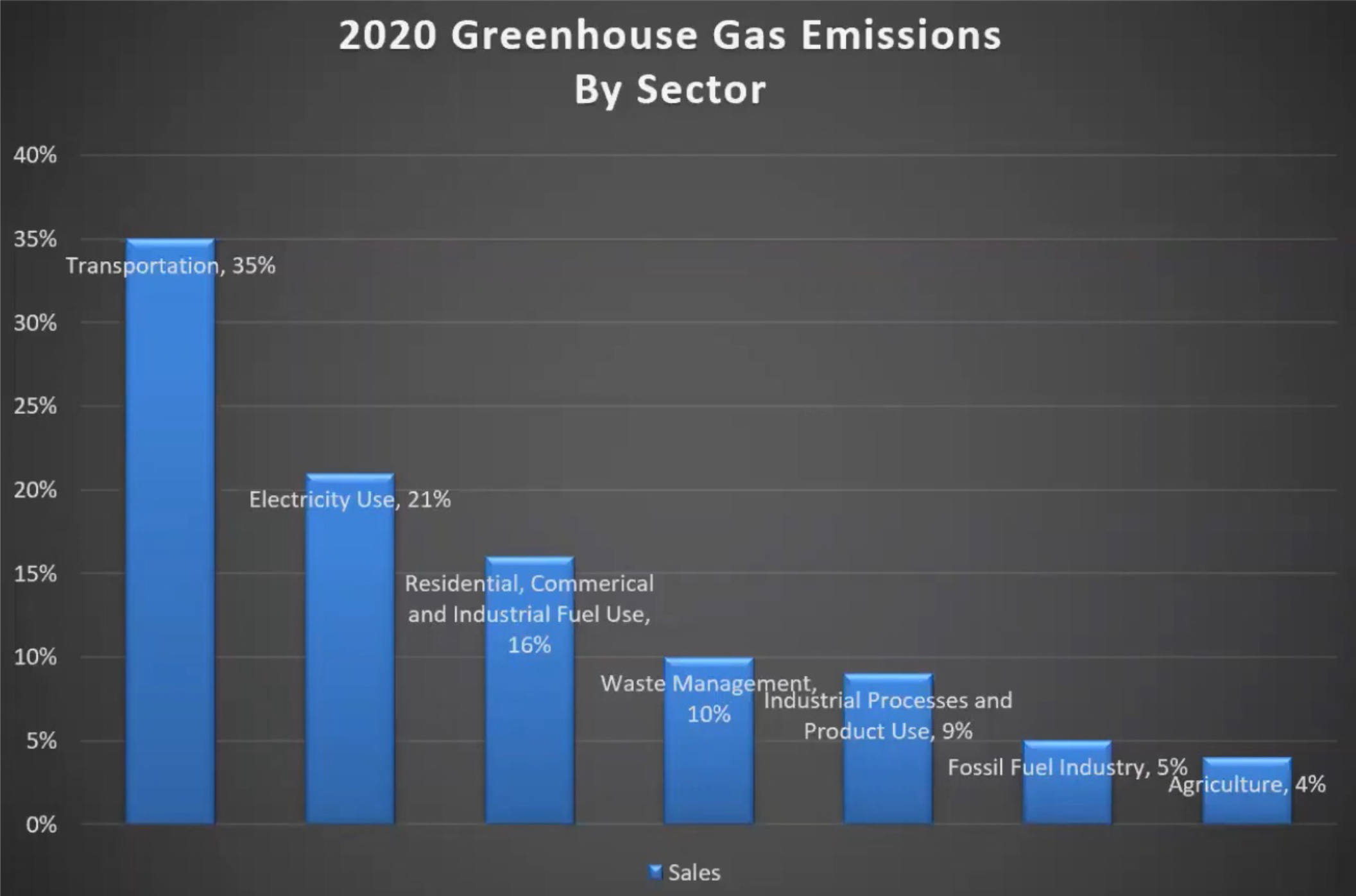Tracking energy usage, establishing benchmark Energy Star scores and using that data to identify necessary energy equipment changes and retrofits will become an increasingly important activity for real estate owners as Maryland implements the Climate Solutions Now Act.
Passed by the General Assembly in 2022, the act requires the state to cut greenhouse gas (GHG) emissions 60 percent by 2031 and achieve net zero by 2045. Energy experts participating in a recent webinar sponsored by the Maryland Clean Energy Center emphasized the importance of assessing buildings’ energy use and preparing to upgrade systems.

Click to see the details of this graphic. Industrial fuel utilized by the residential, commercial and industrial real estate industries accounts for approximately 16 percent of all greenhouse gas emissions in Maryland currently. Credit: Gordon-Feinblatt, LLC
The act requires the Maryland Department of Environment (MDE) to develop Building Energy Performance Standards covering most large buildings, said Mark Stewart, Climate Change Program Manager at MDE. Exemptions include buildings smaller than 35,000 square feet, designated historic properties, public and nonpublic elementary and secondary schools, and manufacturing and agricultural buildings.
Jared Lyles, a Certified Energy Manager (CEM) at MD Energy Advisors, described energy benchmarking as “the process of comparing performance over a set period against the same performance of a similar building or the same building over a different time period.”
It is difficult to improve if you don’t first measure and establish performance metrics, Lyles explained. “One easy way to accomplish this is to examine the past two years of energy bills to detect trends in usage as compared to the actual operation of the building. This is the first step to identify methods to reduce energy usage and expenses.”
Executives at MD Energy Advisors recommend a building walk-through to uncover potential equipment deficiencies and breakdowns, improper and cost-inefficient uses of energy, opportunities to improve operational processes and to identify capital upgrades to improve the asset’s long-term value. They explain that HVAC systems often follow schedules that no longer fit building hours or include inappropriate temperature settings, causing systems to run when they don’t need to. In some cases, these improvements cost nothing and can save thousands of dollars but cannot be addressed until the problem is identified.
“End-users and building owners seeking energy solutions should start by engaging the support of the contracting community, and begin conversations with preferred providers now,” explained Alison Shea, Vice President of Sales, Limbach Company. “It will take time to navigate equipment selections to meet your goals, and it is important to educate yourself and your team now about upcoming regulations. Leverage this situation by performing a life cycle equipment analysis, deferred maintenance and of end-of-equipment life plan. Rebates and funding vehicles will be available, and it is not too soon to research this information as well.”
Lisa Ferretto, Senior Director, Sustainability Practice and Knowledge, AIA, moderated the session. Other panelists included Ben Roush, Principal, FSi Engineers, and Michael Powell, Member, Gordon-Feinblatt, LLC.
The Climate Solutions Now Act is “the most ambitious greenhouse gas reduction plan enacted in the country,” Powell said. He added that “the goalposts have been moved” from the state’s previous GHG reduction goal and that “these percentages will be extremely hard and very expensive” to reach.
Powell noted that residential, commercial and industrial real estate industries account for 16 percent of GHG emissions. Transportation is the biggest source of GHG, accounting for 35 percent of emissions in state. He predicts electric rates in Maryland will increase significantly in the coming years and that, beginning in 2035, consumers will not be allowed to purchase a gas-powered vehicle.